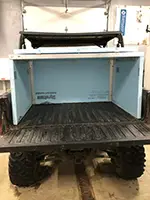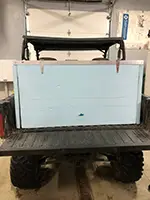
Calf Care Checklist: 7 Ways to Keep Milk Warm Before you Feed It
 By Ann Hoskins, Vita Plus calf products coordinator
By Ann Hoskins, Vita Plus calf products coordinatorIt can be a challenging to keep milk at the ideal feeding temperature in the winter. It is critical for the calf to receive milk at 100 to 105 degrees F to help maintain body temperature and conserve energy in cold temperatures. Consistency is also important, and if you live in an area where the temperature constantly fluctuates, you must adjust your protocols accordingly.
Start with warmer water or milk temperatures. Where is your milk replacer powder stored? Is it at room temperature or coming from cold storage? Cold milk replacer powder will dramatically decrease the water temperature when mixing. Also consider your feeding equipment and whether it’s stored in a heated or cold area.
After the milk solution is mixed, here are a few ideas to keep the milk warm:
- Use an insulated tank to store prepared milk for transport.
- Wrap the tank or bottles in an insulated sleeping bag. (It’s best to have a couple on hand to allow for washing.)
- Use spray foam to coat the tank to help hold in the heat.
- Mix multiple batches to allow time for feeding.
- Use lids on pails to trap in heat.
- If you are transporting milk via pails or bottles, build an insulated shelter for the pails or bottles. This can be built out of Styrofoam or wood with insulation. Make it easy to take on and off, like the one pictured below.


- A warm water bath is also an option, but it can make for wet and uncomfortable conditions for calf feeders.
No matter how you protect the milk temperature, measure your success. Take temperatures at the beginning of milk prep, when heading out to the calves and throughout the process. Make sure the last calf milk temperature still falls between 100 and 105 degrees F. Always feed youngest to oldest to make sure the youngest calves get the warmest milk.
Winter can bring a lot of challenges for calves and people. Serving warm milk to calves will help the calves get through the cold winter days.
| Category: |
Calf and heifer nutrition Starting Strong - Calf Care Winter calf care |

